Tyrosine Kinase
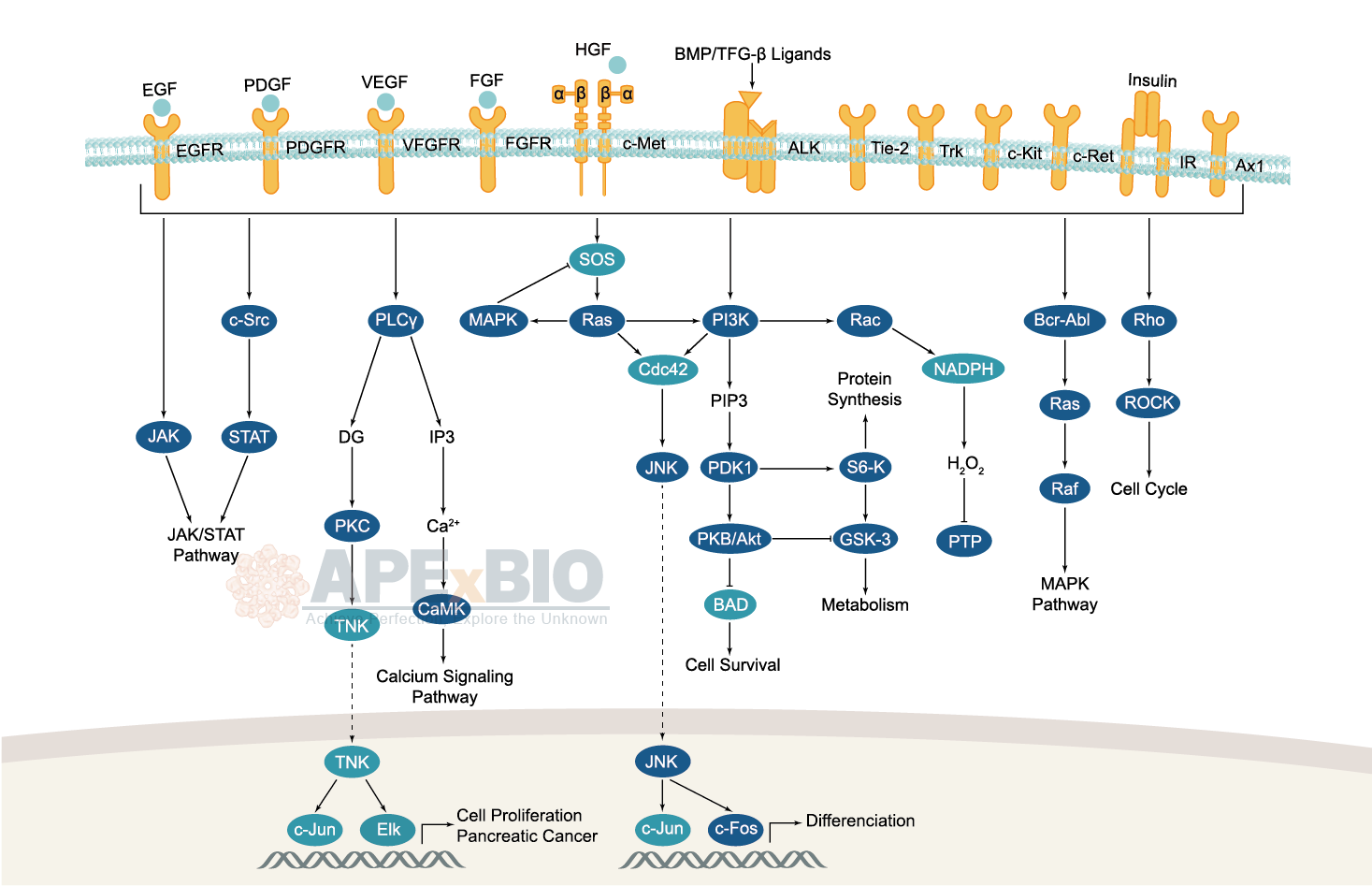
Receptor tyrosine kinases bind to extracellular ligands/growth factors, which promotes receptor dimerization and autophosphorylation of receptor tyrosine residues. This triggers a cascade of downstream events through phosphorylation of intracellular proteins that ultimately transduce the extracellular signal to the nucleus, causing changes in gene expression. Receptor tyrosine kinases include EGFR/ErbB, PDGFR, VEGFR, FGFR and MET subfamilies etc. Dysfunctions in tyrosine phosphorylation are linked to oncogenic transformation. In additions, various adaptor and effector proteins couple to carboxy-terminal of an active kinase. For instance, binding of the GRB2 adaptor protein activates EGFR and MAPK/ERK signaling.
Non-receptor tyrosine kinases involve many well-defined proteins (e.g. the Src family kinases, c-Abl, and Jak kinases) and other kinases which regulates cell growth and differentiation. For example, Src family kinases are curial for activating and inhibitory pathways in the innate immune response.
-
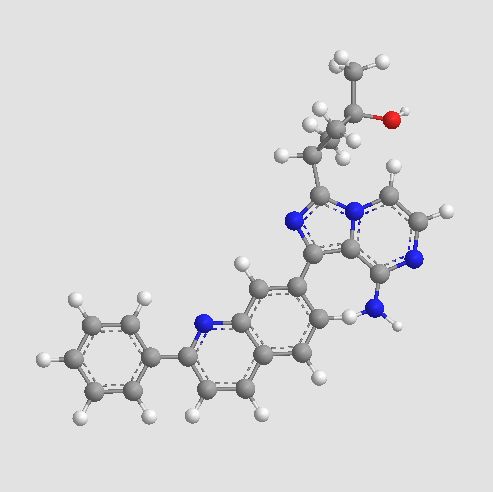 A8334 Linsitinib3 CitationSummary: IGF1R/IR inhibitor,potent and novel
A8334 Linsitinib3 CitationSummary: IGF1R/IR inhibitor,potent and novel -
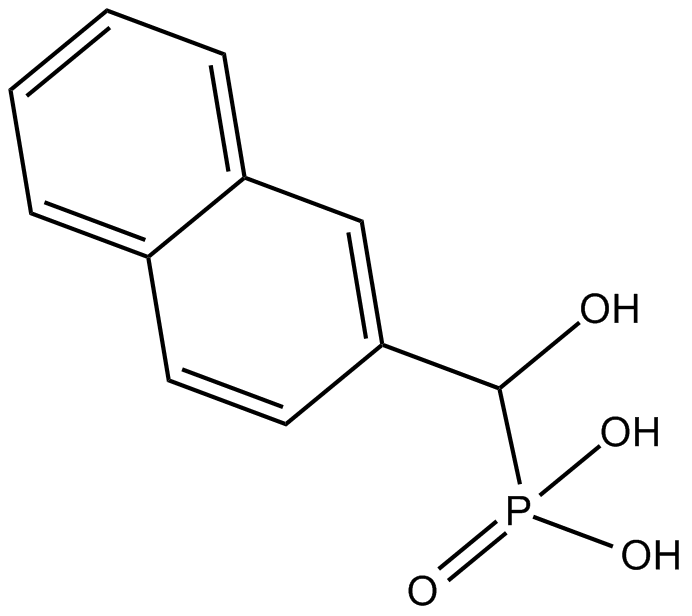 C5553 HNMPASummary: cell impermeable tyrosine kinase inhibitor
C5553 HNMPASummary: cell impermeable tyrosine kinase inhibitor -
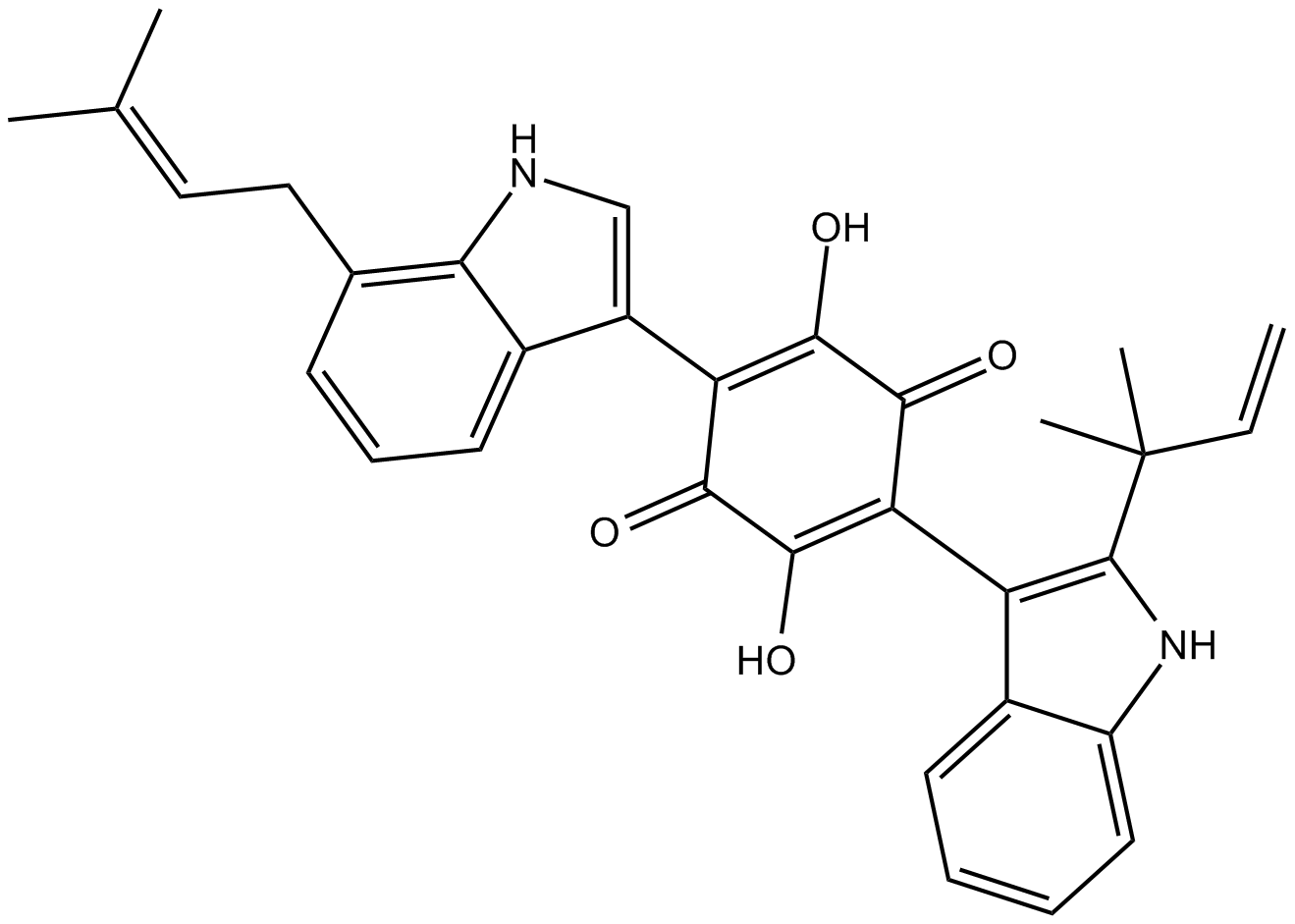 B6869 Demethylasterriquinone B1Summary: insulin receptor (IR) activator
B6869 Demethylasterriquinone B1Summary: insulin receptor (IR) activator -
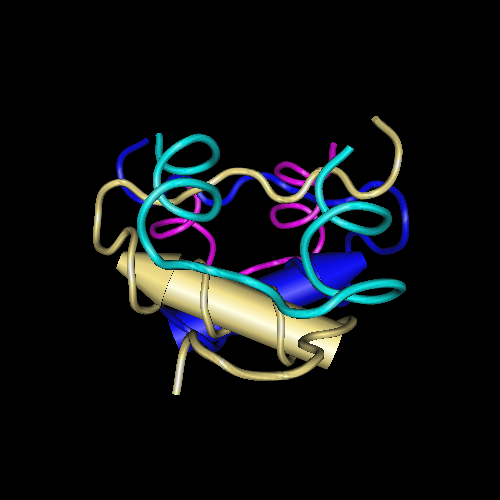 B7407 Insulin (human) recombinant expressed in yeastTarget: Insulin ReceptorsSummary: Endogenous insulin receptor agonist
B7407 Insulin (human) recombinant expressed in yeastTarget: Insulin ReceptorsSummary: Endogenous insulin receptor agonist -
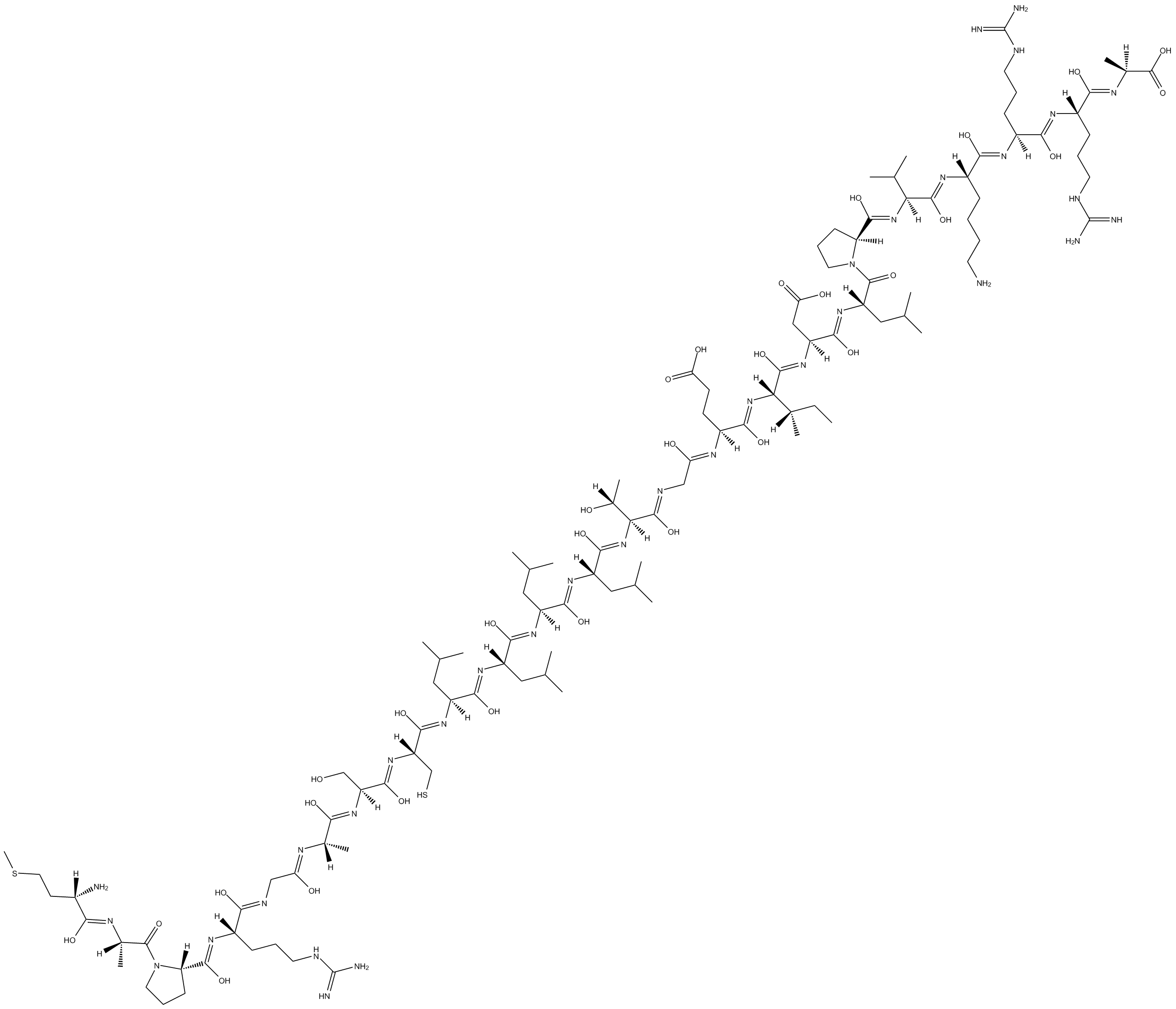 B7764 HNGF6ASummary: increases glucose stimulated insulin secretion and glucose metabolism
B7764 HNGF6ASummary: increases glucose stimulated insulin secretion and glucose metabolism -
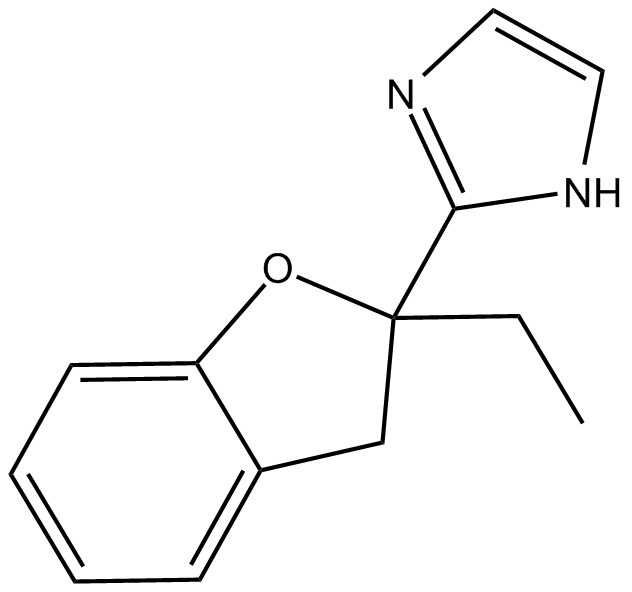 A3534 KU14RSummary: I(3)-R antagonist
A3534 KU14RSummary: I(3)-R antagonist

